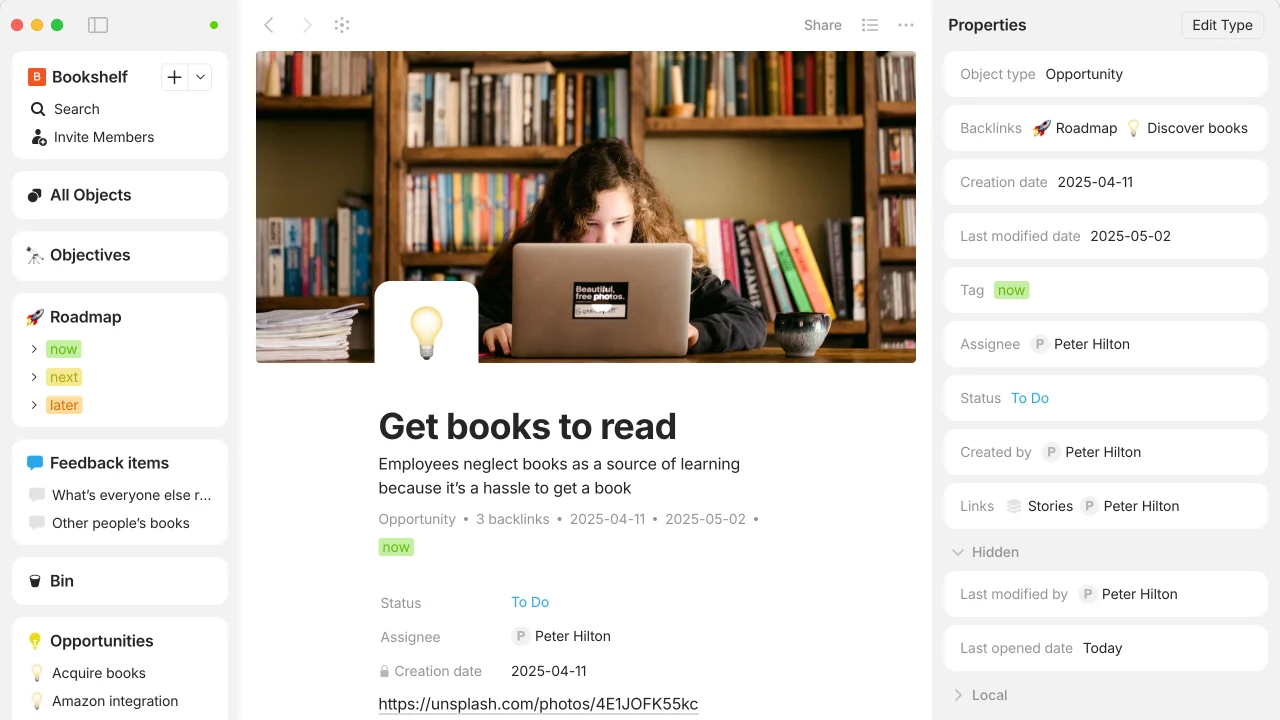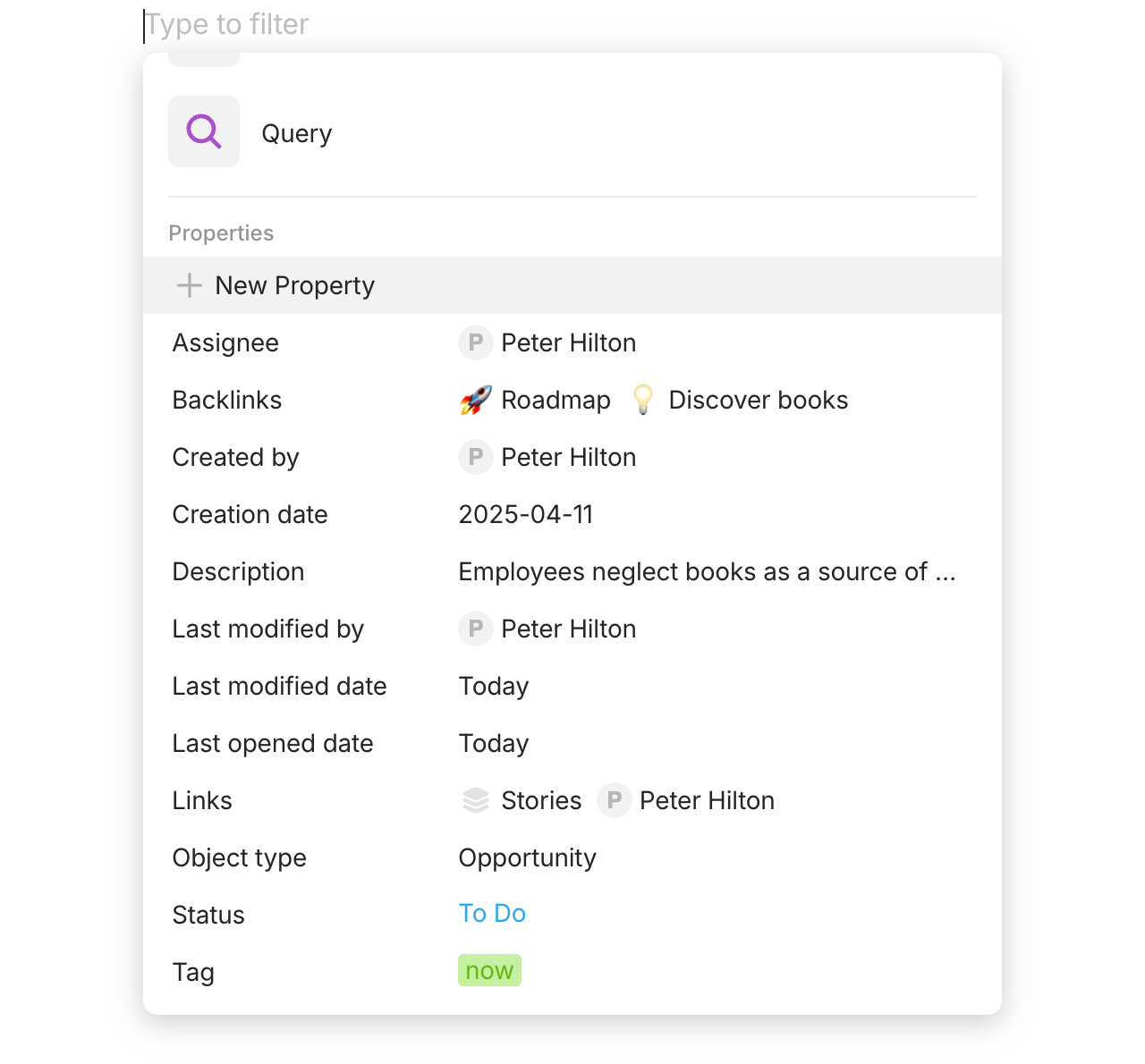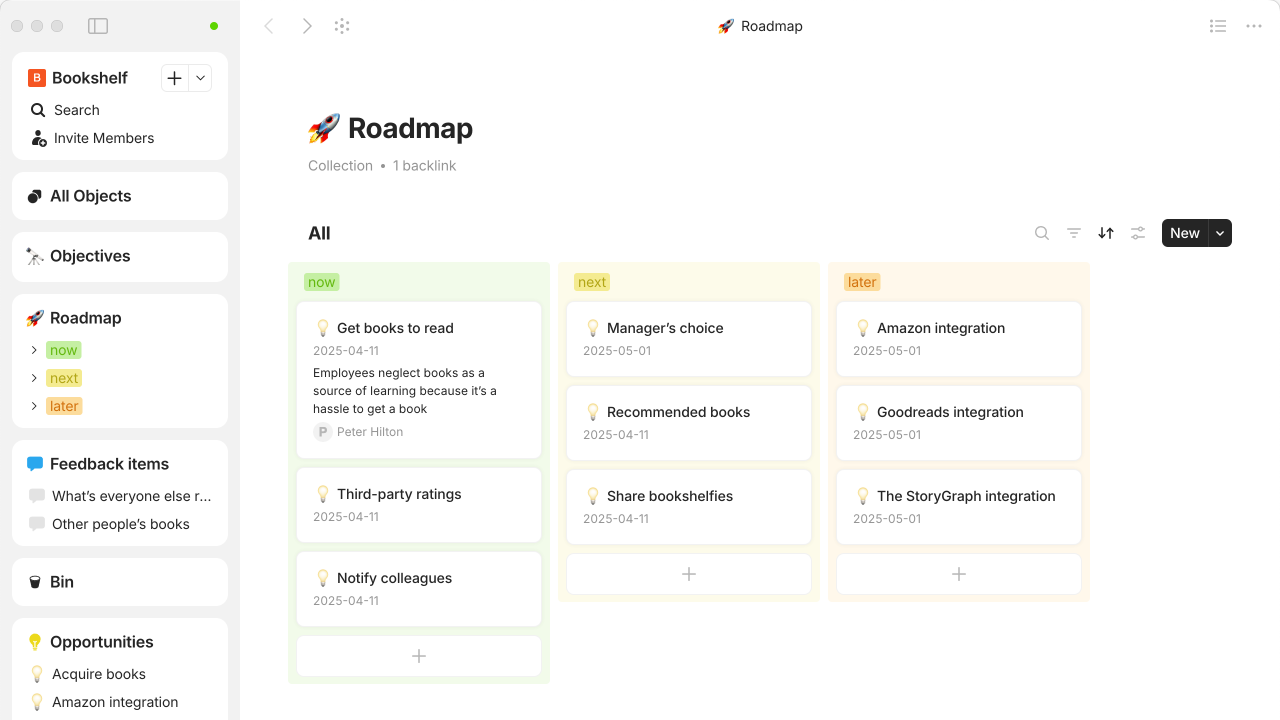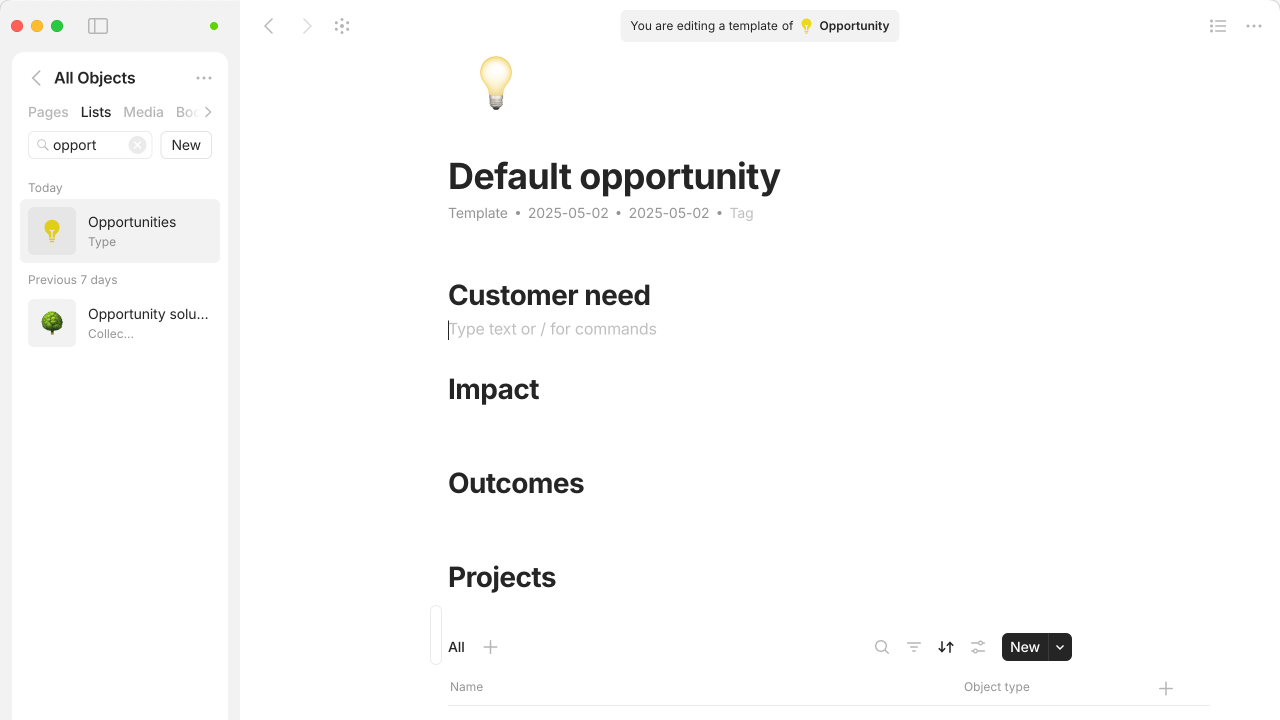Anytype review
a European Notion alternative with types 2025-05-13 #product #review
- Anytype review ←
- Anytype architecture
Exploring European alternatives to office software revealed a new product from Germany. Anytype’s public beta combines desktop and mobile user interfaces that resemble Notion, but with some new ideas and a promising user experience.
Editing pages
Editing pages in Anytype looks a lot like editing them in Notion, with various block (paragraph) types, and even includes the optional banner image and page emoji. However, Anytype immediately feels different, because of how fast and responsive it feels.
 

All Anytype pages have properties, such as a Creation date or a Tag, which live in a sidebar. You can also choose which ones to include in the page header, and can insert a property name and value as a block anywhere in the page, using an insertion menu:
 

Having properties on every page removes Notion’s distinction between pages and database entries. This simplifies Anytype’s content model, in a way, but makes it less obvious how to organise pages.
Organising pages
In Anytype, a collection works the same way as a Notion database, either inline in a page, or standalone. You add or move pages to the collection, and define views with sorting and filtering.
 

As well as this board view, you can choose a table, list, gallery, calendar, or a graph:
 

Unfortunately, the graph view only supports automatic layout. You can drag the nodes (pages) around, but the view doesn’t preserve their positions, so you can’t use it for something like an opportunity solution tree.
Search
Full-text search works surprisingly well, compared to most software these days. For example, search results actually show the matched text within a page:
 

Perhaps more importantly, search feels fast. After all, user-interface responsiveness remains a timeless user experience challenge.
So far, Anytype feels like Notion, but fast. Things get more interesting when you go one level deeper.
Organising information
The properties you want on each page depends on the kind of page, so that similar pages share the same properties. Anytype’s key feature – included in its name – gives each page a type that has a name and a set of properties. The default types include page, which has basic properties, such as creation date and tags. The Task type adds task-specific properties, such as assignee and due date.
You can of course define your own types, so that roadmap opportunities, for example, have statuses (now, next, later) that correspond to columns on a roadmap board view (above).
 

While a type defines the data, each type can include multiple templates that provide default content for new pages, just like Notion database templates.
 

Intriguingly, although an Anytype collection resembles a Notion database, an Anytype collection can mix types. This, and the ability to insert views that query objects, by type or property, give you a lot of flexibility in how you organise information.
As with Notion, it probably takes a while to explore how you can use this flexibility. Meanwhile, you can start simply, with only pages, and add custom properties, types and queries later.
A new model
I like Anytype’s content model and user experience enough to want to try it out with a team. Then its modern local-first architecture and on-device encryption will become interesting.

